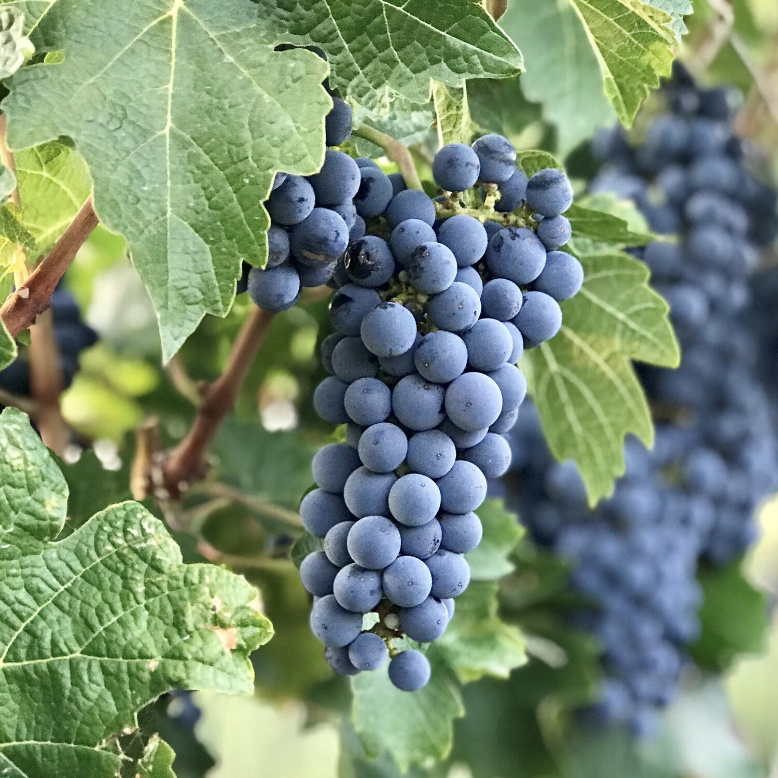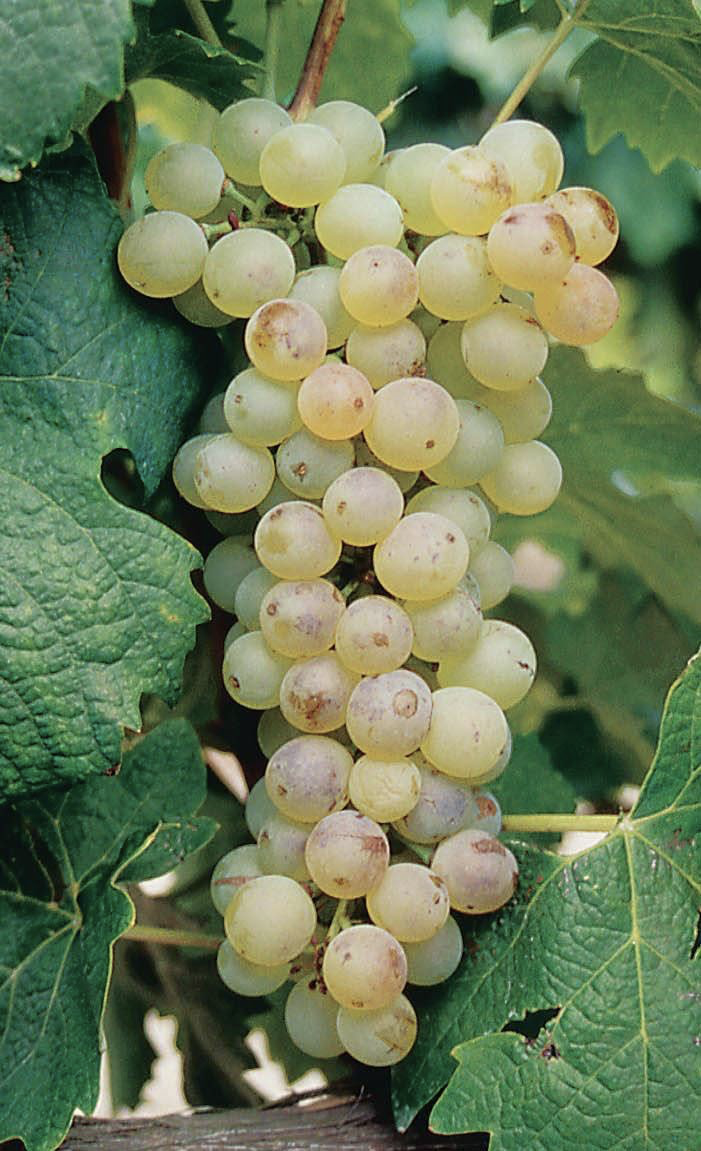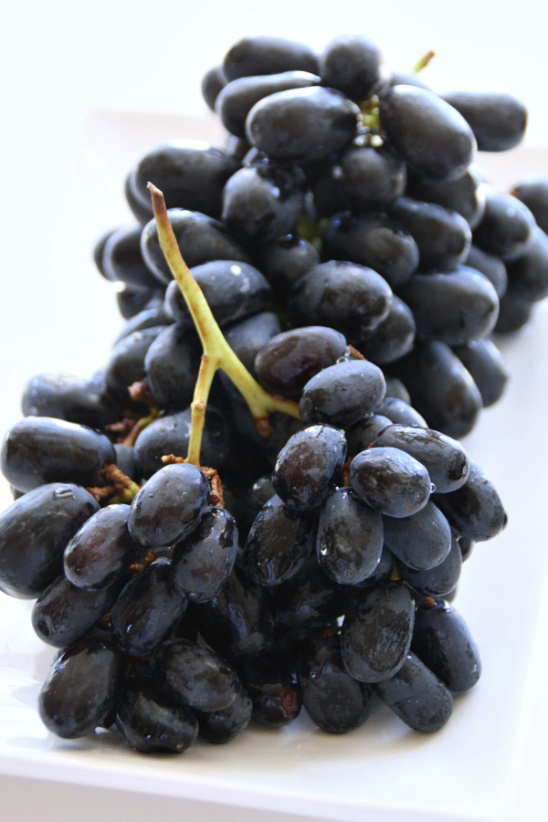
Wine Varietals Directory
RED
Alicante
Alicante Bouschet or Alicante Henri Bouschet is a wine grape variety that has been widely cultivated since 1866. It is a cross of Petit Bouschet (itself a cross of the very old variety Teinturier du Cher and Aramon) and Grenache. It’s deep color makes it useful for blending with light red wine. It was planted heavily during Prohibition in California for export to the East Coast.
Aglianico
Aglianico is a black grape grown in the southern regions of Italy, mostly Basilicata and Campania. Wines produced from Aglianico tend to be full-bodied with firm tannins and high acidity, endowing them with good aging potential. The rich flavors of the wine make it appropriate for pairing with rich meats such as lamb.
Barbera
As with many grapes that are widely planted, there is a wide range of quality and variety of Barbera wines from medium bodied, fruity wines to more powerful, intense examples that need cellaring. Some characteristics of the variety are more consistent—namely its deep ruby color, pink rim, pronounced acidity and normally rather modest levels of tannins.It produces good yields and is known for deep color, full body, low tannins and high levels of acidity.
Burgundy
Red Burgundy is wine that is made in the Burgundy region of eastern France using 100% Pinot Noir grapes. Sweetness: Dry,Body: Medium-full, Tannins: Light, Acidity: Medium-high
Cabernet Franc
Cabernet Franc is one of the major black grape varieties worldwide. It is principally grown for blending with Cabernet Sauvignon and Merlot in the Bordeaux style, but can also be vinified alone, as in the Loire's Chinon. Cabernet Franc is lighter than Cabernet Sauvignon, making a bright pale red wine that contributes finesse and lends a peppery perfume to blends with more robust grapes. Depending on the growing region and style of wine, additional aromas can include tobacco, raspberry, bell pepper, cassis, and violets. It has slightly less tannins than Cabernet Sauvignon and tends to produce a wine with a smoother mouth feel
Cabernet Sauvignon
Cabernet Sauvignon is one of the most widely planted grape varieties in the world. Wine made from Cabernet Sauvignon is generally stronger than Merlot and full flavored. The Cabernet Sauvignon grape has a thick skin that results in wines that can be high in tannin which provides structure and the ability to age. This grape is strongly associated with the red wines of Bordeaux and is blended with Merlot, Cabernet Franc, Petit Verdot, and Malbec. The aroma of Cabernet Sauvignon has been described as chocolate, ripe jammy berries, oak, pepper, earth, violets, blackcurrant, spice, and cedar.
Carnelian
This grape was created using a cross of Grenache with an existing cross of Carignan and Cabernet Sauvignon. Carnelian grape variant is basically the genetic twin of Centurian.
Carignane
Carignan is a late budding and late ripening variety that is often one of the last grapes to be harvested during a vintage.
Cinsault (Black Malv)
Cinsaut planted in California as Black Malvoisie. The vine can produce heavy crops, but wines are much better if yields are controlled. Cinsaut is very drought resistant but can be susceptible to disease, so appreciates a dry climate. It is often blended with grapes such as Grenache and Carignan to add softness and bouquet.
Chianti
Chianti Classico are premium Chianti wines that tend to be medium-bodied with firm tannins and medium-high to high acidity
Dolcetto
The Italian word dolcetto means "little sweet one", but it is not certain that the name originally carried any reference to the grape’s sugar levels. They can be tannic and fruity with moderate,or decidedly low, levels of acidity and are typically meant to be consumed within a few years after release.
Grenache
One of the most widely planted red wine grape varieties in the world. It is generally spicy, berry-flavored and soft on the palate with a relatively high alcohol content, but it needs careful control of yields for best results. It tends to lack acid, tannin and color, and is usually blended with other varieties such as Syrah and Carignane.
Malbec
is a purple grape variety used in making red wine. The grapes tend to have an inky dark color and robust tannins, and are known as one of the six grapes allowed in the blend of red Bordeaux wine. It ripens mid-season and can bring very deep color, ample tannin, and a particular plum-like flavor component which adds complexity to claret blends.
Merlot
Merlot is a red wine grape that is used as both a blending grape and for varietal wines. Merlot based wines usually have medium body with hints of berry, plum, and currant. Its softness and “fleshiness”, combined with its earlier ripening, makes Merlot a popular grape for blending with the sterner, later-ripening Cabernet Sauvignon, which tends to be higher in tannin.
Montepulciano
Montepulciano is Italy's second most widely dispersed indigenous grape variety. Montepulciano is rarely found in northern Italy because the grape has a tendency to ripen late and can be excessively "green" if harvested too early. When fully ripened, Montepulciano can produce deeply colored wines, with moderate acidity and noticeable extract.
Mourvedre
Mourvedre is variety of wine grape used to make both strong, dark red wines and rosés. Mourvèdre wines often have wild game, or earthy notes to them, with soft red fruit flavors.
Nebbiolo
Nebbiolo produces lightly-colored red wines which can be highly tannic in youth with scents of tar and roses. As they age, the wines take on a characteristic brick-orange hue at the rim of the glass and mature to reveal other aromas and flavors such as violets, tar, wild herbs, cherries, raspberries, truffles, tobacco, and prunes. Nebbiolo wines can require years of aging to balance the tannins with other characteristics.
Nero D’Avola
Is "the most important red wine grape in Sicily and is one of Italy's most important indigenous varieties. Colour: cherry or ruby red. Perfume: typically winy, fruity, strongly reminiscent of blackberries. Flavour: dry, slightly acidic, rounded, warm and full-bodied. Serving temperature: ambient.
Petite Sirah
Petite Sirah is a variety of red wine grape primarily grown in California, Australia, France, and Israel. Petite Sirah is also called Durif. These grapes produce a deep colored, robust, peppery wine that packs plenty of tannin and has good aging ability. Compared to Syrah, the wine is noticeably more dark and purplish in color.
Pinot Noir
The name is derived from the French words for “pine” and “black” alluding to the varietals’ tightly clustered dark purple pine cone-shaped bunches of fruit. Originally from France where it is used in all of the great red burgundies. This grape produces a wine that is clear, brilliant, and medium to deep red in color. It is rich, velvety, and full of flavors such as cherries, raspberries, and strawberries.
Petite Verdot
Petit Verdot is a full-bodied red wine that originates in southwestern France (in Bordeaux). It is highly desired as a blending grape in red Bordeaux blends because of its plentiful color, tannin and floral aromas of violet
Primitivo
A dark-skinned grape known for producing inky, tannic wines, particularly Primitivo di Manduria and its naturally sweet Dolce Naturale variant. Although there have been contentious and long-running debates about the variety's geographical origins, there is little question that Primitivo's modern-day home is in southern Italy, particularly Puglia
Ruby Cabernet
Ruby Cabernet is a red Olmo grape variety that is a cross between Cabernet Sauvignon and Carignan, it can produce wines with good colour and a pleasant cherry flavour, but is mostly blended into bulk wines.
Sangiovese
Sangiovese is prized for its high acid, firm tannins and balanced nature. Savory flavors of dark cherries and black stonefruit are characteristic, and may be backed by secondary notes of tomato leaf and dried herbs. Young Sangiovese has fresh fruity flavors of strawberry and a little spiciness, but it readily takes on oaky, even tarry, flavors when aged in barrels
Syrah
Wines made from Syrah are often full bodied with aromas ranging from from violets to berries, chocolate, espresso and black pepper. Syrah is widely used to make a dry red table wine and is often blended with Cabernet Sauvignon, Merlot, Grenache, Mourvedre, and Viognier.
Tannat
Tannat is a red-wine grape whose origins lie in the Basque country, on the border between France and Spain. Softer, higher-alcohol wines are in demand, so grapes like Tannat, with its high natural acidity and aggressive tannins, are in danger of being overrun by well-known favorites like plump Merlot and spicy, juicy Syrah.
Tempranillo
Tempranillo is native to Spain and is the main grape used in Rioja. The grape makes a full-bodied red wine which can be consumed young. Tempranillo wines can be also be aged in oak and the best are ruby red in color, with aromas and flavors of berries, plum, tobacco, vanilla, leather and herb.
Touriga Nacional
A dark-skinned grape variety that is currently very fashionable and is widely believed to produce the finest red wines of Portugal. ouriga Nacional is Portugal's answer to France's Cabernet Sauvignon. Both varieties display bold dark-fruit flavors, often with hints of spice, leather and violet.
Valdepena
The Valdepena grape is thick skinned and deep red in color. Wines produced from these grapes tend to be medium to deep red. Aromas have been described as leather, tobacco, vanilla, and earthy.
Zinfandel
Zinfandel is a variety of red grape planted in over 10 percent of California vineyards. The grapes typically produce a robust red wine. The grapes can have a high sugar content which will ferment into a high level of alcohol. Styles include: a light spicy flavor with a berry-like aroma, or a full bodied, oak aged, berry-like, dark colored.
WHITE
Albarino
Albariño (Alvarinho) is a green-skinned grape variety native to Galicia on the north Atlantic coast of Spain. The variety is high in acidity, and can be produced as a light white wine or in a fuller style, with oak or lees aging adding to the texture and richness
Chablis
The Chablis region is the northernmost wine district of the Burgundy region in France. Chablis are frequently described as having citrus and white flower aromas with dry, lean, light-bodied flavors of citrus, pear, minerality, and salinity. Chablis rarely displays flavors of butter – an indication of oak-aging.
Chardonnay
Chardonnay originated in the Burgundy wine region of eastern France but is now grown wherever wine is produced, from England to New Zealand. Chardonnay flavors have been described as citrus and melon and are made with and without barrel aging. Chardonnay is also produced using malolactic fermentation which imparts a buttery flavor. Chardonnay is a versatile grape producing a soft, fruity wine without oak aging and aromas of smoke, vanilla, and caramel with barrel aging.
Chenin Blanc
Chenin Blanc originated in the Loire Valley of France. Its high acidity means it can be used to make everything from sparkling wines to well-balanced dessert wines. Chenin Blanc when vinified as a dry wine can distinguish itself as a single varietal wine with flavors of quince and apples or it can add acidity as a blending component.
French Colombard
French Colombard is possibly the offspring of Gouais Blanc and Chenin blanc. This grape provides backbone, due to its natural acidic character, for white blends. French Colombard can produce a crisp, moderately dry, spicy wine.
Johannisburg Riesling
A grape varietal used in the production of white wine and is used as a blending agent in the production of Ice Wine in Canada. Although the origin is unsubstantiated, the noblest variety is found in Germany. The varietal is also grown in the United States (CA), France, Austria, Australia, and New Zealand. A zesty wine balanced between fruit and a steely acidity. Vary from dry and crisp to full bodied and sweet. Hints of apples, peaches, honeysuckle, floral, honey, musk, and light spice. Riesling from California tends to by dry and melony, while German Riesling tends to be tart with flavors of grapefruit. Cheap Rieslings are sharp. The higher quality, pricier choices are sweet, complex and delicate.
Malvasia Bianca
Malvasia Bianca vines are of medium to high productivity and produce yellow-brown grapes with low to medium acidity. When vinified dry, the resulting wine can be very clean and crisp. Malvasia Bianca shows ripe pear flavors backed by honey notes and a touch of spice.
Muscato (Alexandria)
Muscat of Alexandria is very vigorous and prone to produce high yields that can be easily overcropped as well as a more assertive aroma profile due to a higher concentration of the monoterpene geraniol, which produces a geranium scent, and lower concentration of nerol which a more fresh, sweet rose aroma.
Muscato (Canelli)
This American grape wine comes from California's Central Valley. It has intense aromas of sweet orange blossom, and flavors of sweet pear, orange zest and ginger spice.
Muscato (Black)
Muscat of Hamburg, which is also known as Black Muscat. This dark-skinned grape is believed to have originated in the Victorian greenhouses of England, where it was first described in 1858 as being propagated. The first is in California, where nearly all of the 102 hectares (250 acres) of Black Muscat in cultivation in 2009 were destined for wine production, primarily to produce dessert wines
Pinot Gris / Pinot Grigio
Pinot Grigio also known as Pinot Gris is thought to be a mutant clone of Pinot Noir. Pinot Grigio usually has grayish-blue fruit but can also have a brownish pink, black, or even white appearance. The grapes grow in pinecone shaped clusters and wines produced from these grapes vary in color from light shades of pink to copper to a deep golden yellow. The grape grows best in cool climates, and matures relatively early with high sugar levels. This can lead to either a sweeter wine, or, if fermented to dryness, a wine high in alcohol.
Sauvignon Blanc
The Sauvignon Blanc grape originated in the Bordeaux region of France and has a green skin. The grape can produce crisp, dry, and refreshing white varietal wines. Sauvignon Blanc also is a component of the dessert wines Sauterne and Barsac. Sauvignon Blanc from California tend to be either one of two styles. The first a fruity styles with tropical fruit undertones or a barrel-aged style with rounded melon notes.
Thompson Seedless
The most widely planted grape in California, though most of the fruit is used for raisins, table grapes, and to a lesser extent, jug wine. Thompson's Seedless has very little value as a wine producing varietal.
Viognier
Viognier is a white-wine grape variety known for producing textural, aromatic wines with pronounced stonefruit flavors; "apricots and steel" are the variety's classic flavor associations. On the nose, Viognier wines can also be very herbal, with aromas of chamomile, lavender, thyme and even a hint of pine. In aged examples and sweeter styles, this potentially overpowering herbal profile is softened by honeyed notes.
White Zinfandel
White Zinfandel is an off dry to sweet, pink-colored white wine. It is made from the Zinfandel wine grape, which would otherwise produce a bold and spicy red wine.













































